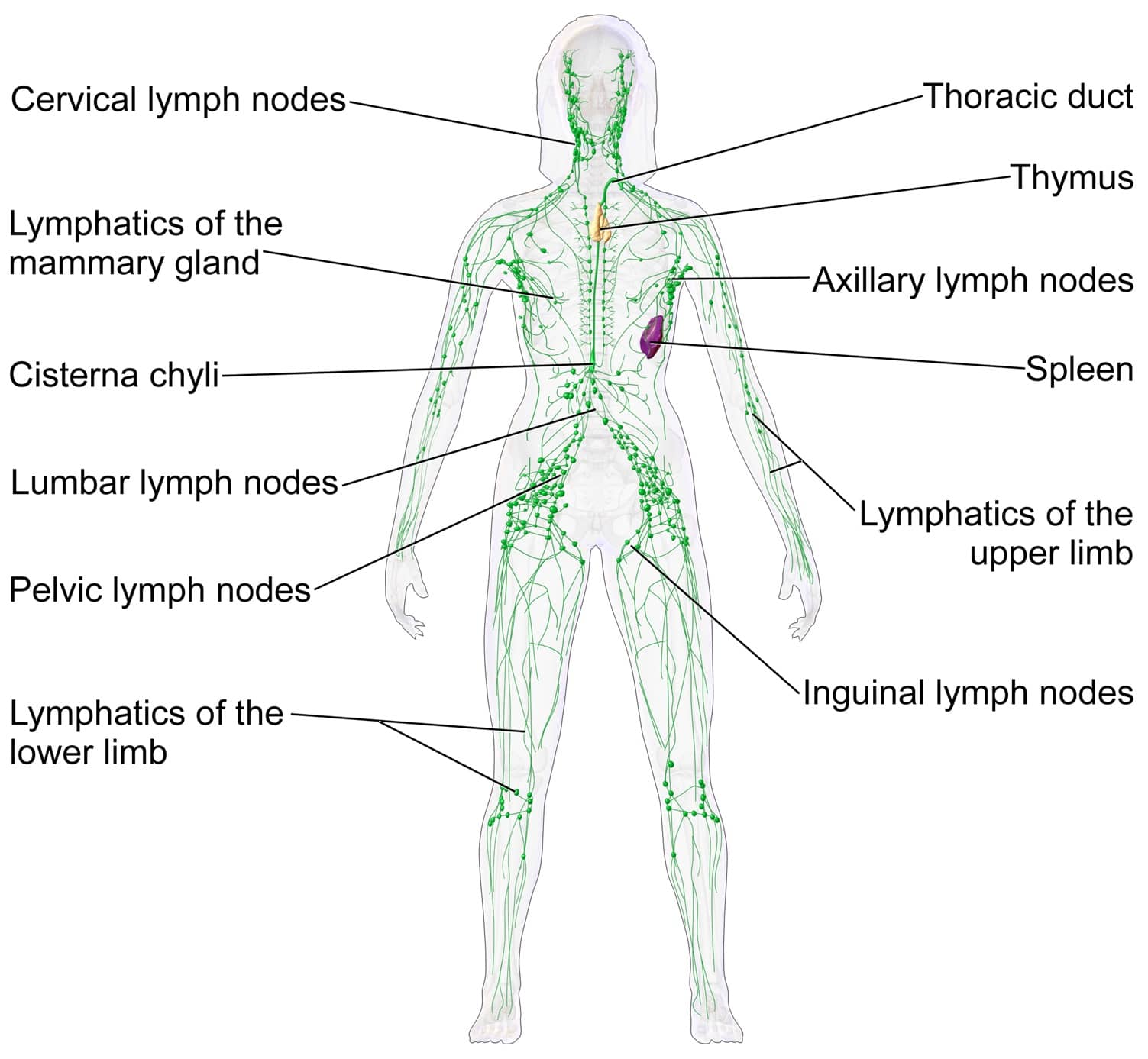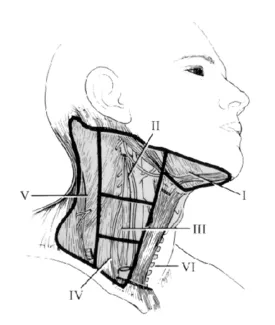Lymphadenectomy
A lymphadenectomy, also known as lymph node dissection, is a surgical procedure to remove one or more lymph nodes or groups of lymph nodes, which are then evaluated for the presence of cancer. It is important to know whether cancer has spread to the lymph nodes and to remove as many lymph nodes as possible who may contain cancer. After the lymph nodes are removed, the removed specimen is checked under a microscope for signs of cancer. For a regional lymphadenectomy, most of the lymph nodes in the tumor area that are involved with cancer are removed; this is also called a lymph node dissection.
What are Lymph Nodes
The lymphatic system is responsible for returning excess fluid from body tissues to the circulatory system and for defending against foreign or harmful agents such as bacteria, viruses, or cancerous cells. The major components of the lymphatic system are lymph capillaries, lymph vessels, and lymph nodes. Lymph is a clear fluid found in tissues that originates from the circulatory system. Lymph capillaries are tiny vessels that carry excess lymph to larger lymph vessels; these in turn empty to the circulatory system. Lymph nodes are small, oval- or bean-shaped masses found throughout the lymphatic system that act as filters against foreign materials. They tend to group in clusters in such areas as the neck (cervical lymph nodes), under the arm (axillary lymph nodes), the pelvis (iliac lymph nodes), and the groin (inguinal lymph nodes).

Diagram of Female Lymphatic System
Blausen.com staff. "Blausen gallery 2014". Wikiversity
Why It's Done
The lymphatic system plays an important role in the spread of cancerous cells to distant organs in the body. Cancer cells may break away from the primary tumor site and travel through the bloodstream or lymphatic system to other sites in body. This is especially true of thyroid cancer. Cancer cells from these tumors may then begin growing in the lymph nodes themselves, a process known as lymph node metastasis. Removal of the lymph nodes enables doctors to remove sites of cancer metastasis. A lymphadenectomy may also prevent further spread of abnormal cells.
Patients with a positive or "involved" lymph node are likely have cancer in other lymph nodes indicating the need for more aggressive treatment such as a selective or complete lymphadenectomy. In this procedure, also known as a "modified radical lymph node dissection", most of the regional lymph nodes are removed and evaluated for cancer, the intent being to treat existing metastasis of the thyroid cancer.
How do the lymph nodes get evaluated? Do I need a lymph node biopsy?
While many cancers may have “sentinel lymph nodes”, thyroid cancer does not need this. Instead, we usually use ultrasound to examine the thyroid and neck area for any evidence of abnormal lymph nodes. If no abnormal lymph nodes are identified on imaging, then no biopsy is necessary. However, if imaging does identify abnormal and suspicious lymph nodes in the neck, then we will do a fine needle biopsy under ultrasound guidance of any of these lymph nodes to confirm the possible existence of metastatic thyroid cancer. This knowledge will then help the doctors determine and plan adequate surgical resection, with the goal of removing involved lymph nodes.
About the Procedure
Diagram of the neck lymph node regions which would often be examined for metastatic disease:

A neck (cervical) lymphadenectomy is usually performed under general anesthesia and may be done at the same time as the thyroidectomy, or at a later time. An incision is made in the skin above the area of the affected lymph nodes in the neck. The lymph nodes, nearby lymphatic tissue and some underlying fatty soft tissues are then removed and evaluated (dissected). A “modified radical neck dissection” allows the surgeons to remove the lymphatic tissue and surrounding fatty soft tissue while preserving all the important neck structures, such as neck muscles, motor nerves, and large blood vessels, with the goal of removing the cancers without compromising neck mobility function. The procedure is often delicate and may take a few hours. Most commonly, in a lateral neck dissection, compartments 2, 3, 4, and 6 are resected. A central lymph node dissection removes lymph nodes in compartment 6. Compartment 1 is not usually affected in thyroid cancer.
Complications of the procedure include:
- Numbness, tingling, or pain in area of surgery and jaw/shoulder area, which may be temporary or permanent
- Injury to any motor nerves that move various parts such as the mouth corners, vocal cord, diaphragm, shoulder, or the arm.
- Neck tightness which requires some physical therapy to improve in mobility
- Bleeding or lymphatic fluid accumulation in the operative area under the skin.
- Incisional infection
Our surgeons have great expertise in lymphadenectomy.
